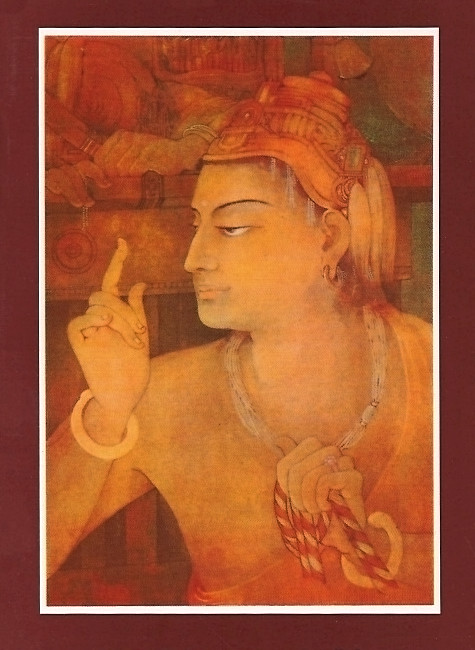The interpretation of the Gita is clouded by the clash of metaphysical viewpoints – whether it preaches Dualism, Monism, Qualified Monism, pure Monism, etc. But these controversies are about the metaphysics of the peak experiences of a successful spiritual life. For those who have gathered at the foothills to start their spiritual journey, it would be a waste of time to engage themselves in controversies about the precise nature of the peak spiritual experience that awaits them at the top of the mountain. The commentaries of the founders of the various metaphysical schools are a veritable tangle of logic, sophistry, and verbal sleight-of-hand. The real arbiter in this matter is one’s experience. It is true that the Truth is one and whole, but our sights are not whole, they fragment what they see. Sri Aurobindo puts the Gita in its proper perspective when he says:
“The Gita is not a weapon for dialectical warfare; it is a gate opening on the whole world of spiritual truth and experience and the view it gives us embraces all the provinces of that supreme region. It maps out, but it does not cut up or build walls or hedges to confine our vision.”
 The Gita arises as the resolution offered by Sri Krishna to the bewildering crisis faced by Arjuna. Such crises do arise in the lives of all of us from time to time. In facing these crises and responding to them adequately lies the manhood of man, and in this great task the Gita proves to be an invaluable resource.
The Gita arises as the resolution offered by Sri Krishna to the bewildering crisis faced by Arjuna. Such crises do arise in the lives of all of us from time to time. In facing these crises and responding to them adequately lies the manhood of man, and in this great task the Gita proves to be an invaluable resource.
The Gita may have been primarily a Moksha Shastra (science of Moksha or spiritual liberation) for our ancestors. Now for our generation the struggle of life itself has become so tough that we have not much time left to devote ourselves to thoughts of our Moksha. Can the Gita help us today in living wholesome lives? Our minds are constantly under stress; we need courage to absorb them. Our beliefs are constantly under attack; we need an inner ballast of faith to endure them. Our future looks so uncertain and we need a strong faith to hope for a bright future. If the Gita can provide these, then it is certainly a book we need today. The Gita is valuable today as a guide to our life, as a science of good living, as it was as a Moksha shastra to our ancestors. Bur the Gita is most valuable to all of us as “a gate opening on the whole world of spiritual truth and experience”. That is why Aldus Huxley rated it very highly high as a guide to perennial philosophy. Let me now return to that aspect of the Gita in the light of Sri Aurobindo’s Essays on the Gita.
In studying the Gita, it is important to keep in mind all the time its central teaching; otherwise we are likely to read into it our own dogmas and predilections. Thus at one time the Gita was regarded as a gospel of the gradual renunciation of all action, and then it came to be regarded as a gospel of devotion. The modern mind sees the Gita as the scripture of Karma Yoga – gospel of works.
Undoubtedly the Gita is a gospel of works, but of works which culminate in knowledge and which are motivated by devotion and surrender to the Supreme. What the Gita teaches is a divine action, abandonment of all standards of duty and action of the God-possessed done as a sacrifice to the Supreme. It is wrong to read into the Gita a Europeanised mentality and to see it as a scripture which teaches altruistic actions, or social duty or service to fellow-beings. The modern mind is imbued with a practical idealism, and regards social, patriotic and humanitarian goals as the highest to be served. If these are the highest ideals of our age, there is no reason why the man who lives in the Brahmic consciousness should not be all these things; after all Arjuna is being called upon to live according to the highest ideals of the age, but with knowledge and understanding of what lie behind. The modern mind has exiled two essential things, both of which are the master concepts of the Gita – God and God-state or spirituality.
It is a mistake to treat the Gita as a gospel of disinterested performance of duty. Arjuna seeks refuge in the Lord only when he faces a clash of duties. What would normally be seen as duty, he now sees as sin. Should he still pursue his duty dispassionately? Duty is an idea which depends on social conceptions. The awakened inner perception of man, his moral sense is a higher truth than the social concept of duty. Besides, the notion of doing one’s duty implies pragmatic egoism. The Gita’s teaching is not just that the desire for the fruit of action should be given up. It is also that then we should realise that the doer of action is not man but Prakriti impelled by the three gunas. So the Gita urges us to undertake all works but not determined by individual choice.
The argument of the Gita resolves itself into three steps:
- By the renunciation of desire and with perfect equality, works have to be done as a sacrifice to the Supreme. This is the first step of Karma Yoga
- Renounce not only desire for the fruit of action but also the claim that you are the doer of works, since all work is done by Prakriti. This is the second step of Jnana Yoga.
- Lastly, the Supreme Self has to be seen as the Supreme Purusha governing Prakriti. Our love and surrender must go to him and our whole consciousness must dwell on him. This is the Bhakti Yoga
This triune path of works, knowledge and devotion is the core of the teaching of the Gita.
The Gita is one of the great syntheses in which the Indian spiritual tradition is so rich. It starts from the Vedantic synthesis and builds another harmony of Love, Knowledge and Works through which we can approach the Divine.
Today we stand at the head of a new age of development which must lead to a new and larger synthesis than any reached so far. We are not called upon to be either orthodox Vedantins or Tantrics, because that would mean limiting ourselves to the realisations of the past. We do not belong to the past dawns but to the noons of the future. After the synthesis of the Gita was arrived at, a number of new religions have appeared; there are the revelations of modern knowledge; then again, some of the oldest dreams of mankind are visiting us again. All this points to the need for a new and vaster synthesis. But before we build the new, we must take note of the past syntheses. And the Gita is one of the greatest syntheses of this kind.




